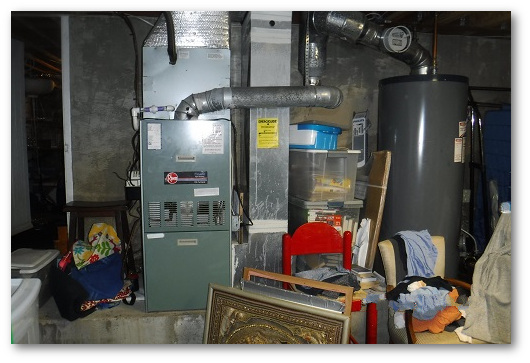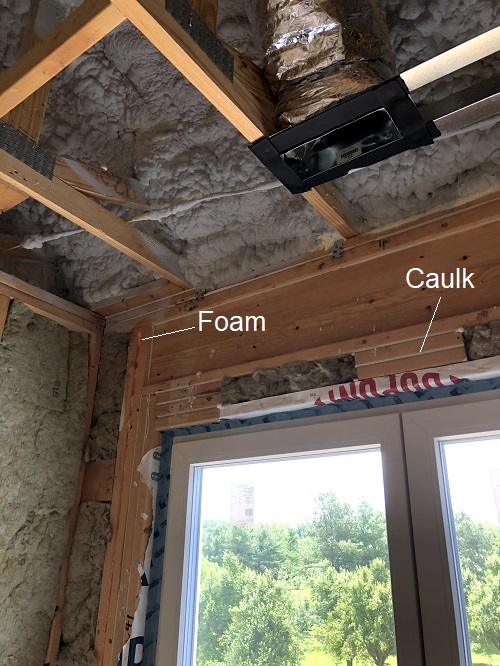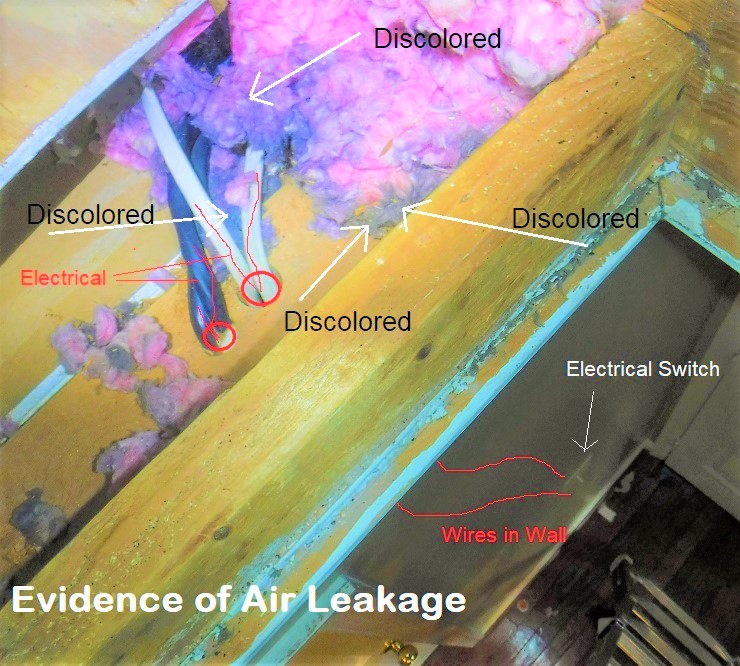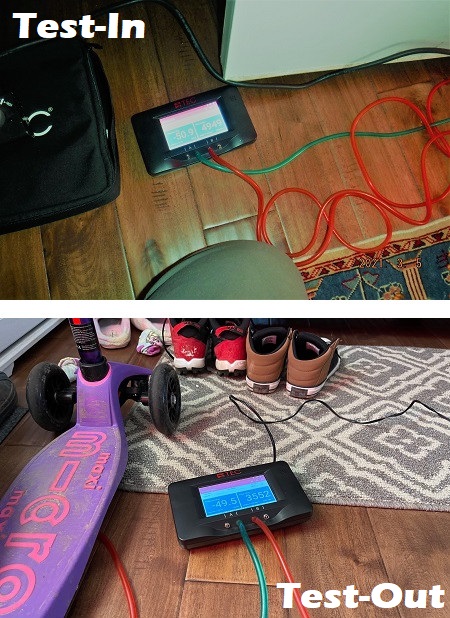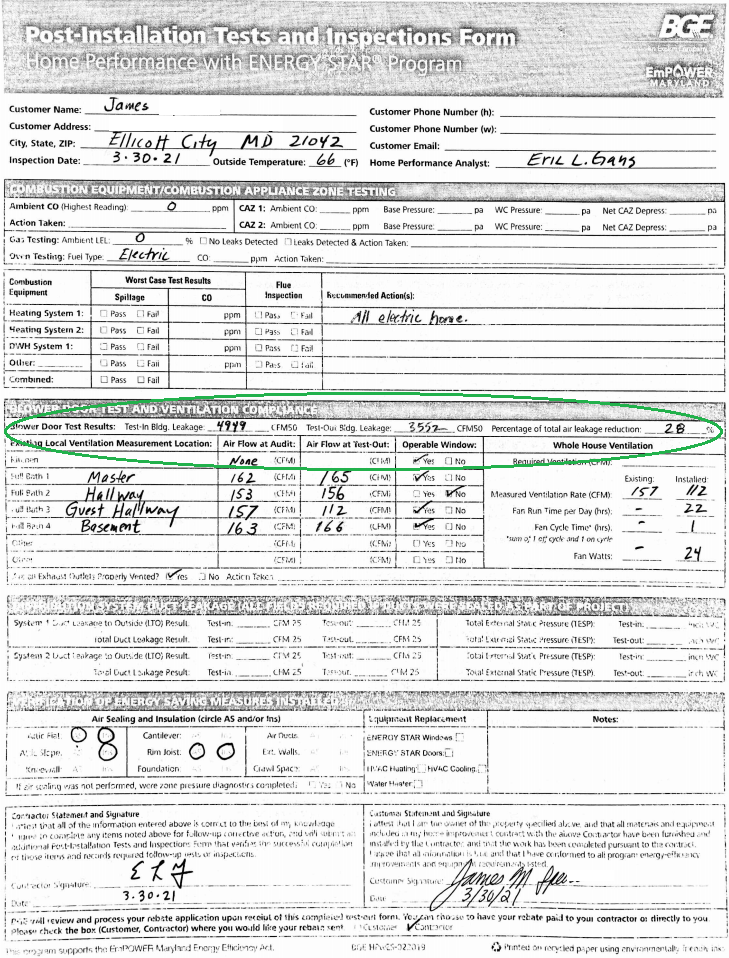Residential Comfort & Energy EfficiencyThursday, April 01 2021
Written by Eric Gans I have completed over 2000 comprehensive home energy audits and hundreds of post-treatment test-outs. I have performed the tasks described in this article and I have also overseen technicians performing the work so that results, once the work is complete, are achieved.
If you want to know if you should air seal your attic, then you can ask yourself a few basic questions and quickly arrive at the answer. The easiest way to know is to determine if you have air sealing in your attic now. If not, then you definitely need air sealing. If you are not sure whether your attic is air sealed (who really wants to get in their attic?) then there are several things you can look for around the house that will tip you off. Tell Tale Signs You Need Air Sealing in Your AtticThe first tell tale sign is spider webs. If you see spider webs dangling in recessed lights, near corners around mouldings in the ceiling or near the attic hatch, then you likely need to air seal your attic. If you are feeling drafts around your home and different rooms seem more comfortable then others, particularly on extreme weather days, then you likely need air sealing in your attic and around other key areas of your home. So, what is air sealing anyways? Let's figure it out... Reasons Air Sealing is ImportantYou don't have to be a home builder to know a little about how a house is made. There certainly is no disputing that older homes, in particular, are not completely air tight. We are able to breath when we are inside, after all. So why is it important to seal up your house? You need air to breath so what is the end game?
The biggest source of energy usage in a household bill is directly related to HVAC. The less your HVAC runs, the lower your bill. Pretty much that simple! But, if your lucky, during extreme temperature days, your HVAC will actually catch up for a few minutes. So, the idea when it comes to air sealing, is to prevent the air from flowing through those cracks in your building's shell, thus keeping it inside your envelope and keeping your home temperature more evenly controlled and comfortable. Without effective air sealing in the attic, the R-value of your attic insulation actually suffers and that only adds to your woes. Envelope Air Leakage VariablesA super interesting physics concept should not be missed when it comes to air leakage in a house. Without some force, air will not simply flow through a crack or gap. Loss of energy through any imperfect connection point is dependent upon the following factors:
**Pressure related to weather also illustrates why on a severely cold day, for example, that it becomes difficult to regulate temperature and keep a modest energy bill. There are two factors at play. 1. The weather outside creates a greater pressure inside, particularly when the gap between the two temperatures is very high (25 degrees outside/ 70 degrees inside). Greater pressure acts to push your conditioned air through the cracks faster. 2. It is cold outside so the HVAC is running and the additional pressure created by the air flowing actually works to push the air through those cracks simultaneously while trying to heat or cool a room to the desired temperature, effectively creating a conveyor belt of conditioned air being delivered to places that nobody in the family is hanging out (outside). Making matters worse, of course, is the fact that all the while that is happening, fresh cold air is being drawn in from other cracks in lower portions of your home. Typical Leakage Point in BasementIn summer the pressure in an attic due to heat forces air through the cracks and as a basic and general rule, hot follows cold. So, in winter the warm air gets pushed up into the attic and in summer the hot attic air gets transferred down to wreak havoc on your AC unit and bills. How to Air SealThe general idea of sealing up a house is rather simple from 30,000 feet up. But, it can be kind of tricky when you are up in the attic and different ways the house is assembled creates unique air sealing opportunities. Sometimes different situations call for different solutions. Common air sealing materials include:
A noteworthy takeaway from the list is that many common building components are listed as air barriers. The key is sealing up the gaps! Take a look at this new construction wall/framing assembly and the attention to detail that is given these days in some instances to sealing up a home.
Obviously, unless we are doing a complete remodel, this is not practical for finished areas in preexisting houses. But, it does demonstrate the ways in which a home can leak and how to seal around any areas that are unfinished. In a retrofit air sealing project, most of the "juicy" spots to seal are in the attic and basement. The video below shows a skilled technician air sealing the tops of walls (top plates), light fixtures and electrical wiring holes that were drilled when the house was built. These are all places that air is traveling through, effectively escaping the inside if your "envelope" and costing you comfort and money. The insulation is missing at the attic floor in the video and air sealing can be done when insulation exists as well. Air Sealing Top Plates and Electrical PenetrationsWhen watching air sealing taking place it starts to make a lot more sense. Of course, there is no way to actually see the air flowing through these tiny gaps in real time, but what does happen over time when there is insulation in place is that the air flows through and around around the insulation leaving dust and dirt in its track.
In the photo above taken at the top of the hallway push up attic access hatch is a great illustration of a few things. First, you will notice the electrical wires that are running through the top of the wall above. The wires feed the hallway switch seen down below. The insulation around where the electrical wires are fed is discolored telling the story that is all too common in homes that are not air sealed. Air is moving through those holes on the regular and air carries dirt and dust. Over time it adheres to the insulation which proves this important point. Add all those holes up around your home and you have a nice big gap that can easily be the equivalent of having an open window in your home all year long. Having the attic unsealed is actually worse than having a window open because of the pressure being the most at the ceiling pushing through more air leakage as a result. Besides electrical penetrations, there are many other areas in the attic that should be air sealed. More examples include:
Air Sealing Bathroom Exhaust FansHave you ever been in the bathroom on a cold day and wonder why it feels so cold in that area despite it being more comfortable in the adjacent room or hallway? Sealing exhaust fans is an important nuance when it comes to attic insulation and they need special attention, particularly if you are experiencing temperature variance in rooms that they exist.
How to Measure Air Sealing ResultsWhile listening to a podcast recently, I was struck by something that one of the hosts of the show said. Essentially, the saying goes something like this: A measured project is a managed project. There is nothing more true than this statement when it comes to air sealing an attic. One of the most difficult things to do is check on the work once the attic is insulated. Moving insulation around once a project is "completed" is grounds for decreasing the overall effectiveness of the work that was done. That is obviously counter-productive. If you are doing this project on your own then the dynamics change and what I am about to say is not nearly as critical. But, if you need to hire a professional, you should make sure that the company is going to perform a blower door test or air leakage test - before the work is done and after. This way, you can measure the results of sealing up the cracks. The blower door measures the house's "leakiness". So, getting a flow number after can be compared to the initial number and results can be taken away in the form of a before/after. The best way to have this done is to get a home energy audit if you have that available in your area. In Maryland, the local utility companies work within the Home Performance with ENERGY STAR parameters and it is a great program for the residents of the state. Watch this blower door test example and what we did to get the right results! The test works by pulling all of the air out of your house and as each little bit of air leaves it is immediately replaced by air from the outside of the "envelope", thus creating a flow at the fan that is measured in cubic feet per minute (CFM). Here is another example of results with photos showing before the work and after with the accompanying signed test-out result form.
The actual result sign off sheet for the homeowner. Health & Safety Matters to Consider when Air SealingTwo building science principles every homeowner should know
Air Changes Per Hour (ACH)Air changes per hour (ACH) can be defined as the amount of times the volume of air inside your home changes with the outside air. It is the house "breathing" in effect. If your house is calculated at 7 ACH then you can expect that on any given day and during any given hour, the inside air will exchange with outside air seven times. ACH in new construction homes has to be very low (3 or less). New building codes for energy efficiency are making builders install energy efficient measures at the time of construction so that all of the typical leakage points are sealed before walls and ceilings go up which makes those areas very difficult to treat after they are in place (like in preexisting homes). Controlled vs. Uncontrolled Fresh Air But, when we tighten up the envelope and don't allow the house to "breathe" as much we have to find solutions to create the right amount of ACH for healthy indoor air quality. The key to this is to make sure the introduction of fresh air into the building is controlled so that less energy is consumed to maintain good indoor air quality (the right amount of fresh air) rather than allowing it to infiltrate uncontrolled causing heating and cooling systems to work much, much harder. Indoor Air Quality - What is it Actually?So in considering indoor air quality, it is important to know that measuring indoor air quality is NOT to measure the amount of particles in the air. Indoor air quality is actually making sure that a building has enough fresh air and in a manner that is cost-effective. Good indoor air quality also goes a long way towards sustainability and the longevity of the buildings structural components. Combustion SafetyA home environment is subject to many different dynamics including pressure. Pressure inside a home varies from house to house, neighborhood to neighborhood. When a combustion appliance, such as a hot water heater or furnace is running, the conditions in the house could change the way the appliance runs. If the change is too much for the system, it could cause a hazardous situation inside the home to unsuspecting inhabitants. Combustion safety testing for gas fueled houses is a key to a safely air sealing a home. Much like the blower door test where the air leakage is recorded before any changes and after, the appliances are tested prior to any work being done. Once the work is completed, the testing is conducted again to see if the resulting "tightening of the envelope" creates any spillage or adverse conditions inside the home. Get Your Scores Today! - Home Energy AuditA comprehensive home energy audit is a great way to have your home evaluated. Measures can be prescribed in a way that will address indoor air quality as well as energy efficiency and comfort. It is the whole house approach that ensures that you can have the best indoor air quality and a less drafty house at the same time. ________________ What do you think about air sealing your house? We want to hear in the comment section below! Comments:
|









